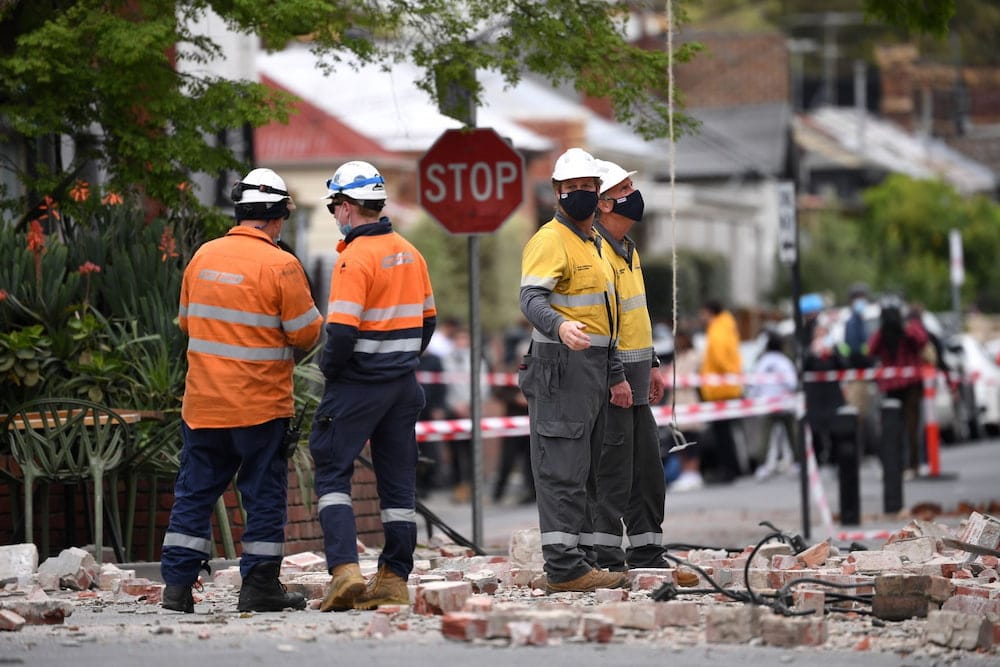A magnitude 5.8 earthquake that struck Gippsland is the largest onshore quake in Victoria’s recorded history and aftershocks could go on for months.
Aftershocks have already struck every few minutes since the 9.15am tremor between Woods Point and Licola North in the state’s east, the largest being a 4.7 quake 18 minutes after the first.
“That in itself would’ve been a pretty exiting day but it was overshadowed by the 5.8,” Seismology Research Centre chief scientist Adam Pasquale told AAP.
Aftershocks are common after earthquakes and Mr Pascale expects them to go on for months.
The aftershocks from Wednesday’s quake have largely ranged between a magnitude 2.0 and 3.0.
“We’re talking aftershocks that people may not feel ever, but earthquakes of this magnitude we’ve had before go on for years,” he said.
Seismological instruments were still recording aftershocks from a magnitude 5.2 earthquake near Baw Baw in 1996, he said.
It’s also possible that Wednesday’s shake might be a foreshock for a larger earthquake.
The initial Baw Baw earthquake was a magnitude 3.5 which was followed 90 minutes later by a magnitude 5.0, while a 4.7 magnitude quake in 2009 was followed with another of the same size two weeks later.
“It’s always possible that this is not the largest event of the sequence,” he said.
“But it’s unlikely. What we’ve seen in the past when we’ve had events of this sort of magnitude is they usually tail off with smaller aftershocks.”
While the quake and the aftershocks have centred on the same area, Mr Pascale said it was not surprising it had been felt so far away.
There are reports of shaking being felt across Victoria, at Canberra’s Parliament House, central Sydney, northern Tasmania and parts of Adelaide.
Mr Pascale said he had even heard reports of it being felt in Newcastle, which was devastated by a magnitude 5.6 earthquake in 1989.
“Our part of the world is a stable continental region – it’s old, hard rock and energy travels really far in hard rock,” he said.
“A magnitude 5.8 in California wouldn’t be felt anywhere near as far as in southeast Australia, but it’s just the fact we have old, cold, hard, dense rock and energy travels further because it’s more consolidated.”
He said short, rigid buildings would be unlikely to be affected by low-frequency energy waves so significant damage was unlikely.
But low-frequency waves would cause more wobbling in taller buildings and if brick walls were reinforced, they would collapse.
AAP
Get all the latest Canberra news, sport, entertainment, lifestyle, competitions and more delivered straight to your inbox with the Canberra Daily Daily Newsletter. Sign up here.



